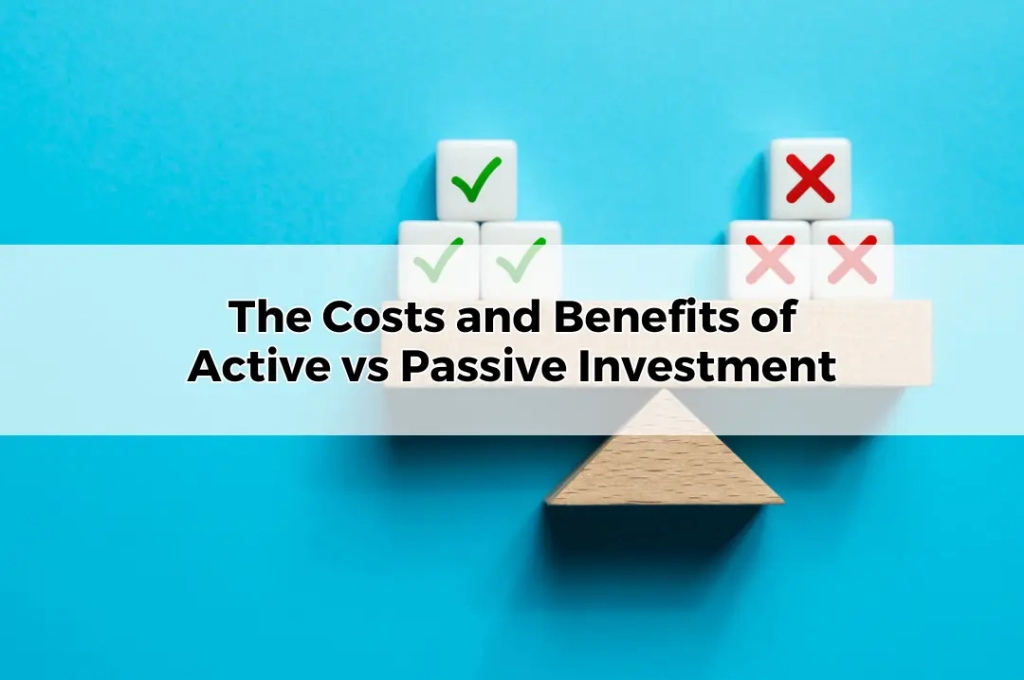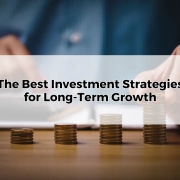The Costs and Benefits of Active vs Passive Investment
Table of Contents
ToggleChoosing between active and passive investment strategies is a pivotal decision for Australians seeking to grow their wealth. Each approach has distinct costs, benefits, and risks that require careful consideration. This article explores the nuances of both strategies to help investors make informed choices.
What is Active Investment?
Definition and Key Features
Active investment involves hands-on management, where portfolio managers or investors actively buy and sell assets to outperform the market. It requires deep market research, strategic planning, and quick decision-making.
Common Examples of Active Strategies
Active strategies include stock picking, market timing, and hedge fund investments. These require significant expertise and a proactive approach.
What is Passive Investment?
Definition and Key Features
Passive investment focuses on replicating market performance rather than outperforming it. It typically involves investing in index funds or exchange-traded funds (ETFs) that track market indices.
Common Examples of Passive Strategies
Index tracking and buy-and-hold strategies dominate passive investing. These approaches aim for consistent, long-term growth with minimal intervention.
Costs Associated with Active Investment
Management Fees and Expenses
Active management often incurs higher fees due to the expertise required. These include management fees, transaction costs, and performance bonuses.
Hidden Costs
Frequent trading can lead to hidden expenses like brokerage fees and capital gains taxes, which reduce overall returns.
Costs Associated with Passive Investment
Lower Expense Ratios
Passive strategies usually feature lower fees, as they require less management and fewer transactions.
Potential Drawbacks
While fees are lower, passive investment may miss opportunities to capitalise on short-term market fluctuations.
Benefits of Active Investment
Potential for Outperformance
Active investors aim to beat the market by identifying undervalued assets or capitalising on trends, potentially leading to higher returns.
Flexibility and Adaptability
Active strategies allow investors to respond quickly to market changes, providing opportunities to hedge against risks or exploit favourable conditions.
Benefits of Passive Investment
Simplicity and Accessibility
Passive investing offers a straightforward approach, making it accessible for beginners and those with limited time to manage their portfolios.
Consistent Long-Term Growth
By tracking market indices, passive investments often deliver stable and predictable growth over the long term.
Risk Comparison
Active Investment Risks
Active investment carries higher risks due to its reliance on market predictions and timing. Poor decisions can lead to significant losses.
Passive Investment Risks
While generally lower risk, passive investments are susceptible to market downturns, as they mirror overall market performance without defensive strategies.
Time Commitment
Demands of Active Investment
Active strategies require continuous monitoring and analysis, making them time-intensive for investors or fund managers.
Effortless Passive Management
Passive strategies demand minimal time commitment, as they typically follow a set-and-forget approach.
Tax Implications
Active Investment Tax Considerations
Frequent trading can trigger substantial capital gains taxes, reducing net returns for active investors.
Tax Efficiency of Passive Investment
With lower turnover rates, passive investments often result in reduced tax liabilities, enhancing overall profitability.
Suitability for Different Investor Profiles
Who Benefits from Active Investment?
Active strategies suit experienced investors with a high-risk tolerance and the resources to manage complex portfolios.
Who Benefits from Passive Investment?
Passive strategies are ideal for those seeking low-maintenance, cost-effective investment options with steady growth potential.
The Role of a Toowoomba Financial Adviser
Customised Investment Strategies
A Toowoomba financial adviser can tailor investment strategies to align with your financial goals and risk appetite, ensuring optimal outcomes.
Balancing Active and Passive Approaches
Combining elements of both strategies can diversify portfolios and balance risks. A professional adviser can help determine the ideal mix.
Final Thoughts
Assessing Your Goals and Resources
Understanding your financial objectives, risk tolerance, and available resources is essential in choosing between active and passive strategies.
Seeking Expert Guidance
Working with a financial adviser ensures that your investment strategy aligns with your goals. Contact Wealth Factory in Toowoomba for tailored advice on active and passive investment approaches, optimising your path to financial success.
Selecting between active and passive investment requires a nuanced understanding of costs, benefits, and individual goals. By leveraging professional advice, Australians can navigate these options effectively, building a resilient and prosperous financial future.









